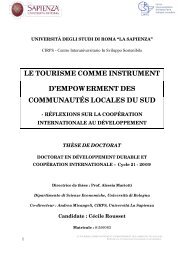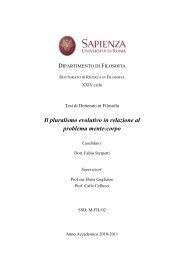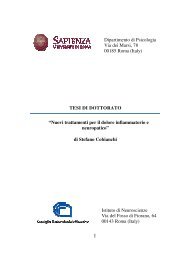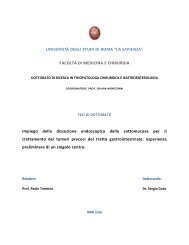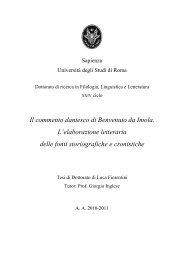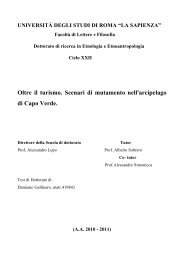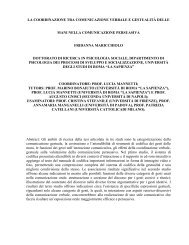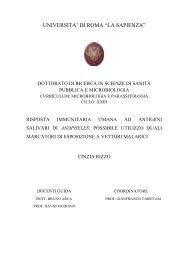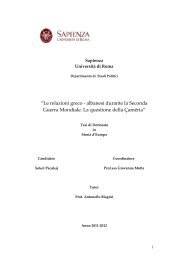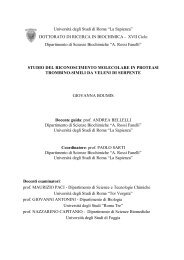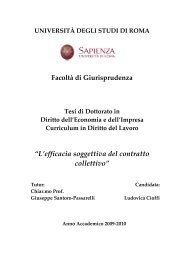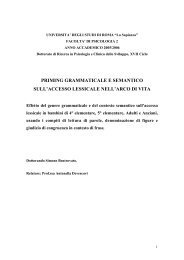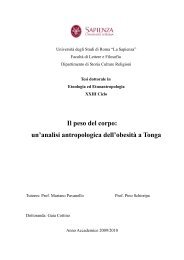You also want an ePaper? Increase the reach of your titles
YUMPU automatically turns print PDFs into web optimized ePapers that Google loves.
36<br />
Capitolo primo<br />
Nei miti arcaici all’origine della lotta vi è un principio femmini-<br />
le 37 . Nell’epica omerica, poi, sebbene l’eroe sia sempre maschile, le sorti<br />
della battaglia sono determinate principalmente da scontri tra dee 38 . Nel<br />
XVIII canto dell’Iliade Teti si reca <strong>per</strong>sonalmente da Efesto <strong>per</strong> chiedergli<br />
di forgiare nuove armi <strong>per</strong> suo figlio Achille (p. 795sgg), così come<br />
nell’Eneide Venere seduce Vulcano <strong>per</strong> convincerlo a fabbricare le armi<br />
di Enea 39 . A tal proposito Helen Coo<strong>per</strong>, Adrienne Munich e Susan<br />
Squier scrivono:<br />
The epic tradition figures arms as being engendered through<br />
the mother by linking making babies and making arms. The<br />
pattern of associating a story of arms making with human birth<br />
begins in the Iliad with the story of Thetis approaching<br />
Hephaistos to make weapons for her son, Achilles. 40<br />
me Eighteen Hundred and Eleven (1812) e Three Guineas (1938), nel segno del pacifismo<br />
e dell’antischiavismo. Cfr. ANNA LAETITIA BARBAULD, Eighteen Hundred and<br />
Eleven, A Woodstock Facsimile, Poole-New York: Woodstock Books, 1995; VIRGINIA<br />
WOOLF, Three Guineas, cit.<br />
37 È Gea, secondo il mito, a costruire la prima arma con l’acciaio contenuto nel<br />
suo stesso corpo, la Terra. Non è Gea stessa, <strong>per</strong>ò, a colpire Urano, anche se è lei a<br />
chiedere, in particolare ai figli maschi, di vendicarsi del padre che li ha tenuti segregati.<br />
Allo stesso modo Rea salva Zeus dalle fauci di Crono e lo prepara alla lotta<br />
contro il padre. Cfr. KÀROLY KERÉNYI, op. cit., p. 34.<br />
38 Si pensi non solo all’antefatto della guerra, rappresentato dalla rivalità tra Era,<br />
Afrodite e Atena, ma anche all’attività di Era e Atena nelle battaglie e al ruolo di Atena<br />
nell’invenzione dell’inganno del cavallo di Troia.<br />
39 Venere ricorda a Vulcano/Efesto non solo la richiesta di Teti ma anche quella<br />
di Aurora, che lo convinse a forgiare le armi <strong>per</strong> il figlio Memnone, accorso in aiuto<br />
a Troia dopo la morte di Ettore. Cfr. VIRGILIO, Eneide, VIII, v. 384, cit., p. 305. Su questo<br />
punto cfr. anche GIORGIO MARIANI, op. cit., pp. 30-35.<br />
40 HELEN M. COOPER, ADRIENNE MUNICH, SUSANNE MERRIL SQUIER, “Arms and the<br />
Woman: The Con[tra]ception of the War Text”, in EADEM (eds.), Arms and the




